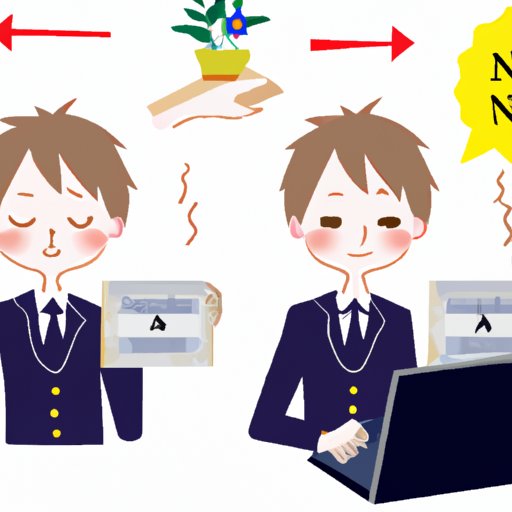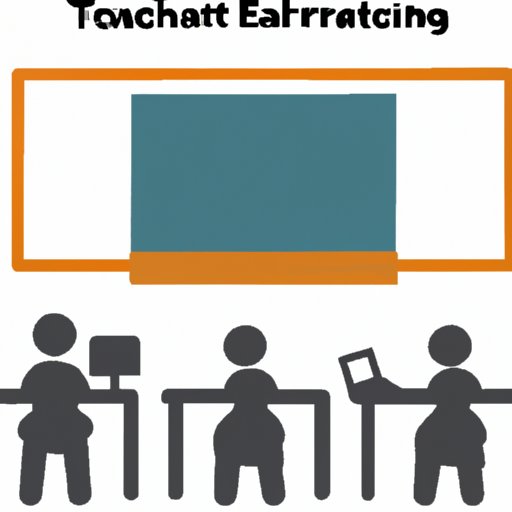Introduction
Technology has become an integral part of our lives. We use it to stay connected, to access information, and to make our lives easier. Technology has also found its way into the classroom, with many schools utilizing technology to improve the learning experience for students. But what are the benefits of using technology in the classroom?
The purpose of this article is to explore the benefits of technology in the classroom. We will look at how technology can increase accessibility to educational resources, improve collaboration and communication between students and teachers, enhance engagement and motivation for students, increase efficiency of assignments and grading, improve student retention of information, and provide a more comprehensive evaluation of student performance.
Increased Accessibility to Educational Resources
One of the primary benefits of technology in the classroom is increased accessibility to educational resources. With the advent of digital technologies, students now have access to a wealth of educational resources that were previously unavailable. These resources can include online textbooks, videos, articles, and interactive lessons.
For example, the Khan Academy is an online platform that provides free access to thousands of educational videos and lessons. Students can watch these videos and participate in interactive activities to learn about a variety of topics. This type of resource would not have been available to students without the use of technology.
Another example is the availability of online textbooks. Many schools now offer digital versions of textbooks that students can access from any device. This makes it much easier for students to access the material they need, as they no longer need to carry around heavy physical textbooks.
The increased accessibility to educational resources provided by technology has numerous benefits. Students can access the information they need quickly and easily, which can save time and energy. Additionally, this type of access can help level the playing field for students who may not have had access to traditional physical resources.
Improved Collaboration and Communication between Students and Teachers
Technology can also be used to improve collaboration and communication between students and teachers. With the use of digital tools, students and teachers can communicate in real-time, allowing for quicker feedback and more efficient problem-solving.
For example, many schools now use online discussion boards where students can ask questions and receive responses from their peers and teachers. This type of communication can help students understand difficult concepts and allow them to get immediate feedback on their work. Additionally, teachers can use digital tools to create collaborative projects that require students to work together to solve problems.
The improved collaboration and communication between students and teachers has numerous benefits. Students can receive timely feedback on their work, which can help them stay engaged and motivated. Additionally, collaboration among students can foster critical thinking skills and help them develop social and interpersonal skills.

Enhanced Engagement and Motivation for Students
Technology can also be used to enhance engagement and motivation for students. With the use of digital tools, teachers can create interactive lessons that keep students engaged and interested in the material. For example, teachers can use interactive whiteboards to display visuals or videos that can help students better understand the material. Additionally, teachers can use games and quizzes to make the material more fun and engaging.
Another way that technology can be used to enhance engagement and motivation is through personalized learning. With the use of data analytics, teachers can track individual student progress and tailor lessons to meet the needs of each student. This type of personalized learning can help keep students engaged and motivated, as they will feel like they are receiving individual attention.
The enhanced engagement and motivation provided by technology has numerous benefits. Students will be more likely to retain the material, as they are more engaged in the learning process. Additionally, this type of engagement can lead to higher academic achievement, as students are more motivated to succeed.
Increased Efficiency of Assignments and Grading
Technology can also be used to increase the efficiency of assignments and grading. With the use of digital tools, teachers can create and manage assignments quickly and easily. For example, teachers can use online submission systems to collect student assignments and provide feedback. Additionally, teachers can use automated grading systems to grade multiple-choice tests and other types of assessments.
The increased efficiency of assignments and grading provided by technology has numerous benefits. Teachers can save time by creating and managing assignments quickly and easily. Additionally, automated grading can help reduce the amount of time spent manually grading assignments.

Improved Student Retention of Information
Technology can also be used to improve student retention of information. With the use of digital tools, teachers can create interactive lessons that help students better understand and retain the material. For example, teachers can use simulations and virtual reality experiences to help students visualize and interact with the material. Additionally, teachers can use games and quizzes to help students practice and reinforce the material.
The improved student retention of information provided by technology has numerous benefits. Students will be more likely to remember the material, as they are actively engaging with it. Additionally, this type of engagement can lead to higher academic achievement, as students are more likely to retain the material.

More Comprehensive Evaluation of Student Performance
Finally, technology can be used to provide a more comprehensive evaluation of student performance. With the use of digital tools, teachers can track student progress over time and identify areas of improvement. For example, teachers can use data analytics to measure student performance on tests and assignments. Additionally, teachers can use tracking software to monitor student behavior in the classroom.
The more comprehensive evaluation of student performance provided by technology has numerous benefits. Teachers can identify areas of improvement and tailor instruction to meet the needs of individual students. Additionally, this type of tracking can help teachers identify students who may be struggling and provide them with additional support.
Conclusion
In conclusion, technology can be used to improve the learning experience for students in numerous ways. Technology can increase accessibility to educational resources, improve collaboration and communication between students and teachers, enhance engagement and motivation for students, increase efficiency of assignments and grading, improve student retention of information, and provide a more comprehensive evaluation of student performance. All of these benefits can help students succeed in the classroom and beyond.
As technology continues to evolve, it is important for educators to stay up-to-date on the latest tools and trends. By leveraging technology to its fullest potential, educators can create a more engaging and productive learning environment for their students.
(Note: Is this article not meeting your expectations? Do you have knowledge or insights to share? Unlock new opportunities and expand your reach by joining our authors team. Click Registration to join us and share your expertise with our readers.)
